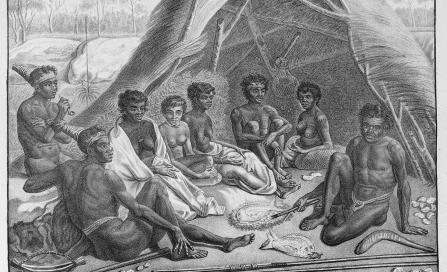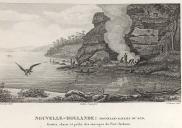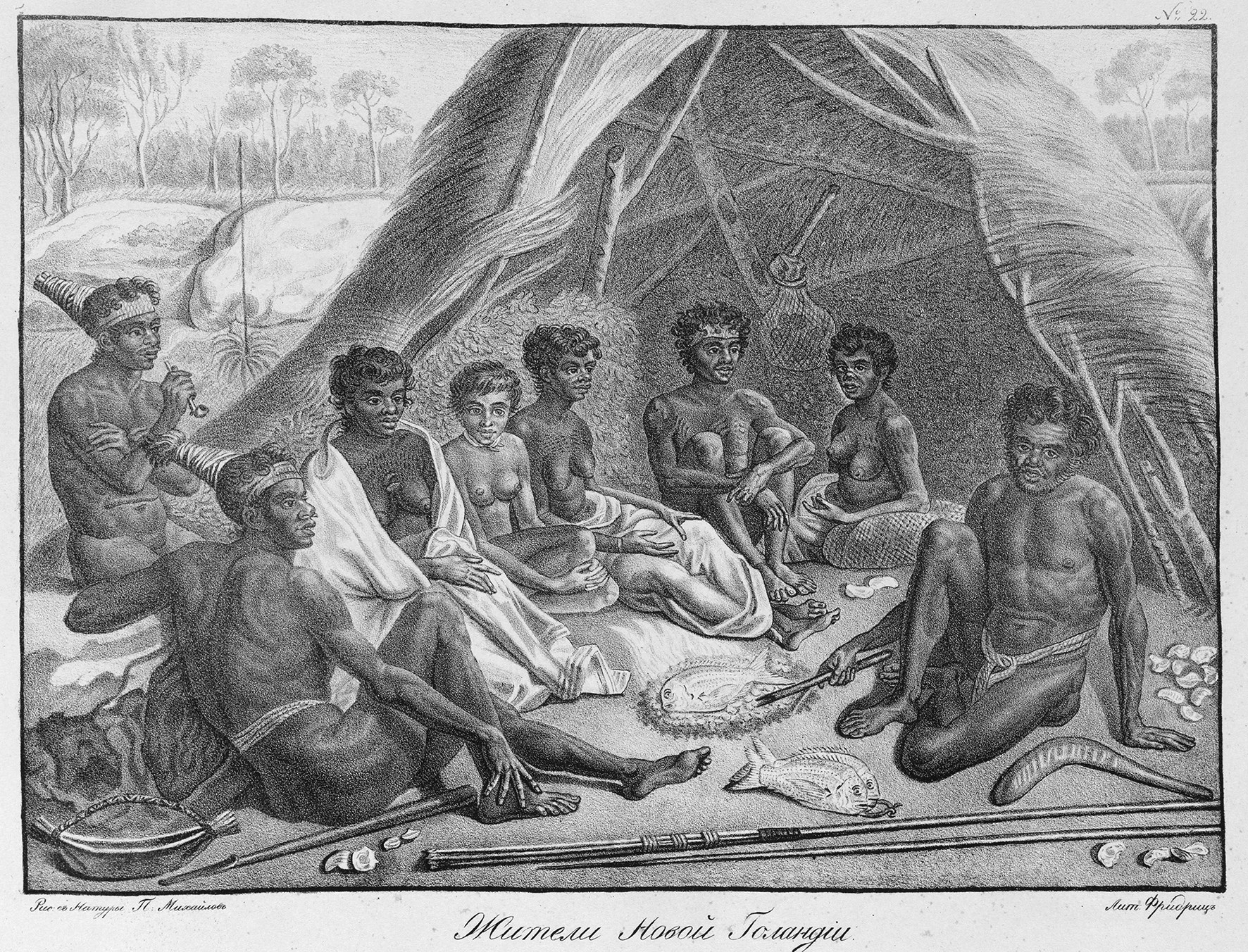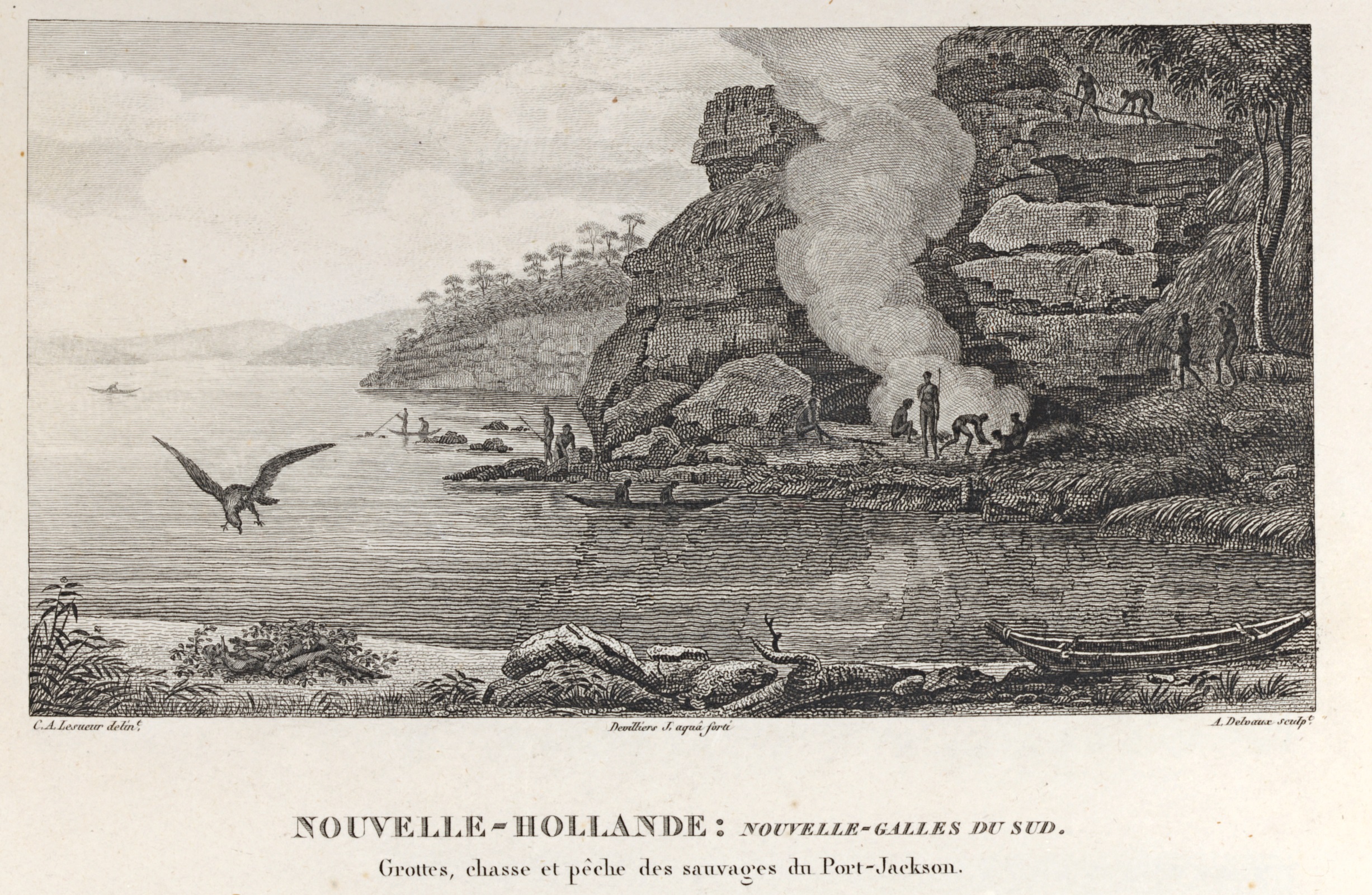|
Aboriginal sheltersThe Aboriginal people of Sydney Harbour were not nomadic but their use of the land and water was marked by mobility.The Cammeraygal and other Harbour clans occupied discrete territories within which there were various camp sites – each used for a limited time depending upon the season, the availability of food or the activity undertaken, such as tool manufacture. There does not seem to have been defined villages or permanent camp sites within these territories. But while the British colonists noted that the clans had no ‘fixed habitations’ the first harbour people did, of course, need shelter from the elements. For this they utilised the many sandstone overhangs and ‘caves’ that lined the waterway. Balls Head has several of these. Studies of rock shelters that still contain evidence of occupation indicate that most faced north, north-east or north-west suggesting they were chosen to provide shelter from prevailing winds and to maximise exposure to the sun’s warmth. It may be, then, that these were favoured places in winter. Rock shelters are the only traditional Aboriginal dwellings that survive. Colonial accounts also make frequent reference to bark and branch huts assembled in the absence of a suitable rock shelter when the need arose. First Fleet officer Watkin Tench described a basic structure similar to a pup tent: ‘pieces of bark, laid together in the form of an oven, open at one end, and very low, though long enough for a man to lie at full length in.’ (A Narrative of the Expedition to Botany Bay, 1789). Two more descriptions in word and image come from the Russian scientific expedition that visited Sydney in the 1820s. By then the traditional territorial and social structures of the Harbour clans had been dramatically altered through a devastating mix of population decline through disease and dispossession. However Bungaree, a Kuringai man from the Broken Bay area, had assumed a leadership role among a group who camped at Kirribilli. One of their huts was described as more of a roofless windbreak; ‘a semicircular wall, some four or five feet high, made of fresh branches. This wall always stood on the side from which the cold wind or bad weather comes’. An engraving that accompanied a later publication shows a more conventional circular hut with bark secured to a frame of bent saplings.
|
|




